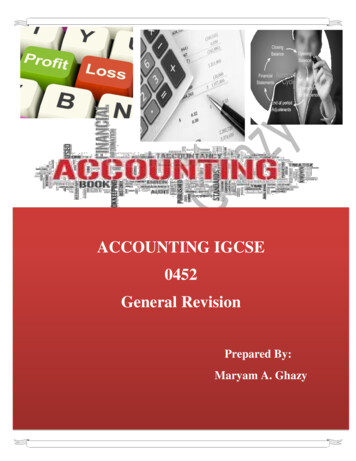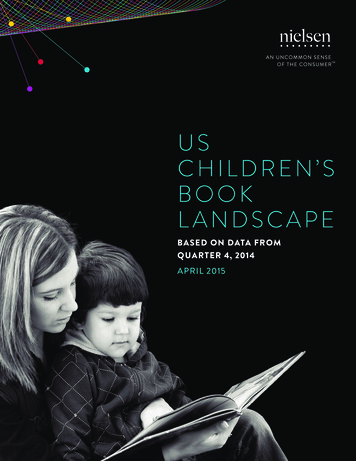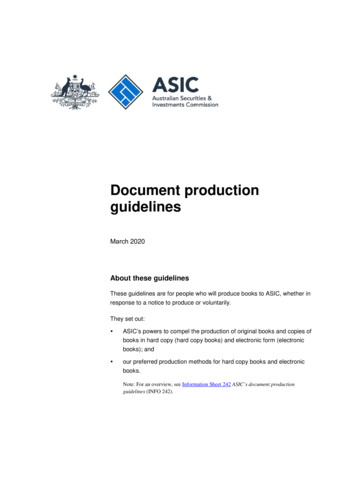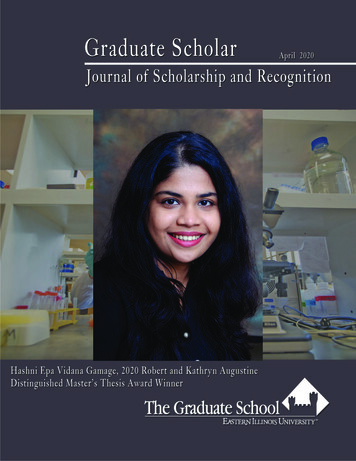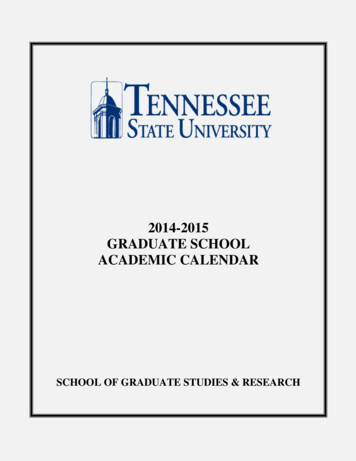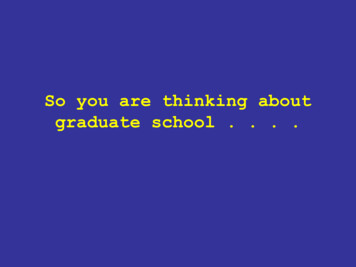
Transcription
SPCH 70500/LING 79200: Speech Science, Spring 2021, instructor: Jason BishopCourse Description:This course presents, in a combined lecture/laboratory format, basic knowledge about speechacoustics, production, and (to a lesser extent) perception. Laboratories are to be completed outsideof class (approximately 2 hrs/week on average). This is good preparation for the Speech ScienceFirst Exam, phonetics-related Qualifying Papers, or for courses in phonology. Students will writeseveral short papers on various topics in speech science and acoustic phonetics (e.g., source-filtertheory; myoelastic/aerodynamic theory of phonation, speech sound sources, among others), acousticcues for vowels and for consonant manner, place, and voicing; perceptual processes. At the end ofthe semester, participants will submit a proposal for a research study (an experimental or corpusbased investigation) that makes use of the tools and/or concepts addressed in the course. Co-authoredproposals among students are encouraged.Note: This course is being taught entirely online and synchronously; as per the course schedule, wewill be meeting on Mondays from 11:45am until 1:45pm (with some exceptions, noted on thepreliminary schedule), with all meetings taking place on Zoom.Course Learning Goals:Students in this course will gain specialized knowledge related to the study of speech production,including source-filter theory and the acoustic analysis of vowels and constants. Students will alsolearn to communicate experimental designs and results in a concise (but informative) way, in bothwritten and oral forms.Texts: Please purchase the first two books. I will provide you with the necessary readings from theother texts, although you will likely want to own them in the long run (Baken & Orlikoff in particularis the kind of book you pull down from the shelf on a regular basis for years). See also the otherreadings (and optional follow-up readings) on the last page of the syllabus.1. Kent, R.D., & Read, C. (1st or 2nd edition). The Acoustic Analysis of Speech. San Diego: CA:Singular. (Chapters listed on this syllabus are from the first edition, but the ordering of chaptersshould be the same for both 1st and 2nd).2. Raphael, L. J., Borden, G. J. & Harris, K. S. [4 th,5th, or 6th Ed.] Speech Science Primer:Physiology, Acoustics, and Perception of Speech. Baltimore, MD: Lippincott Williams andWilkins. (The readings I list in the syllabus are from the 5th edition; if you have the 4th or 6th, thechapters are a little different, so contact me to determine the equivalent if you’re suing one ofthose editions).3. Pickett, J. M. (1999) The Acoustics of Speech Communication: Fundamentals, SpeechPerception Theory and Technology. Needham Heights, MA: Allen & Bacon (ISBN 0-20519887-2).4. Baken, R. J. & Orlikoff, R. F. (2000). Clinical Measurement of Speech and Voice. San Diego,CA: Singular. (ISBN 1-5659-3869-0)5. Ladefoged, P. (2006) A Course in Phonetics (Fifth Edition). Fort Worth, TX: Harcourt. (ISBN0-15-507319-2). (Other editions are fine, although the ones co-authored by Keith Johnson areconsiderably different than the ones prior to that).6. Gick, B., Wilson, I., & Derrick, D. (2013). Articulatory phonetics. Chichester, UK: WileyBlackwell.
SPCH 70500/LING 79200: Speech Science, Spring 2021, instructor: Jason Bishop2IPA sites:You are expected to know, or learn, the International Phonetic Alphabet (IPA). If you don’tknow it already, please begin learning it. These are two interactive sites for hearing examples ofthe sounds of the s://tanakayu.doshisha.ac.jp/teaching.htmlThe following site has the sounds along with either ultrasound or MRI images of the lay.php?chart 1&datatype 2&speaker 4You can download an app sources/software/ipaphonetics/index.phpBases for Evaluation of StudentsYour grade will be based on performance on papers, laboratory reports and a proposal for a study(one which you will hopefully be able to execute after the class). 46% of the grade will comefrom the average of six lab reports, 46% from the average of papers 1 through 4, and 8% fromyour grade on Paper 5 (which is your written proposal). Grades will be on an A-F scale (A 4;B 3, etc.). Late papers and reports receive a one-grade deduction.
SPCH 70500/LING 79200: Speech Science, Spring 2021, instructor: Jason BishopDate & Time: Mon, 11:45am – 1:45pm, Fully Online and Synchronous (on Zoom) (schedule subject to change slightly as the semester progresses)Assignments/Readings due start of each classWk ClassDate Topic11 FebIntroduction and overview (and assessment of everyone’s previous work inphonetics). Review of articulatory phonetics and the IPA, phonetic inventory28 FebSource-Filter Theory of Speech Production, sound sources & resonators, quasiperiodic sources, quarter-wave resonators and 2-tube modelsLab 1: Praat Exercise (no report required)Reading: Kent and Read (Ch1-2) (15 Feb)322 FebHappy Presidents Day! No Class Meeting(More) Source-Filter Theory; Vowel Acoustics/Articulation;(More) speaker differences, temporal characteristicsPaper 1: Source-Filter Theory/Vowel ProductionReading: Kent & Read (Ch3-4)41 MarchGeneration of Sound Sources: Respiration & PhonationSpeech breathing & laryngeal control, speaker differences; f0Lab 2: Analysis of vowels IReading: Garellek (2019)58 MarchConsonant Acoustics/Articulation: Voicing in fricatives and stops, spectral andtemporal cues; phonotactic variation, VOT, closure cues, release cues, precedingvowel durationLab 3: Analysis of vowels IIReadings: Raphael etal. (Ch6); Baken &Orlikoff(Ch7, pp.274-277)615 MarchConsonant Acoustics/Articulation: Manner of articulation, noise duration, silence,nasal murmur, transition and closure duration722 MarchManual and automatic methods for measuring segmental durations; other tools forprocessing phonetic dataLab 4: Voicing in fricatives and stopsReading: Davidson (2016)Paper 2: The voice sourceReadings: Turk, Nakai & Sugahara (2006);Gonzalez, Grama & Travis (2020) (29 March)85 AprilConsonant Acoustics/Articulation: Place in approximants, formant transitions & loci;Place in fricatives, noise spectra, spectral peaks, coarticulatory effectsLab 5: Place of articulation in consonantsReading: Kent & Read (Ch6)912 AprilLexical stress, sentence stress and intonation; segmental durations in relation toprosodic structurePaper 3: Measuring segmental durationsReadings: Raphael (Ch7, pp.159–163); Keating(2006); Turk lecture (“Timing in Talking”)1019 AprilPhrasing/grouping, pausing & disfluency; prosody in relation to speech productionplanningReading: Shattuck-Hufnagel (2019)1126 April[Special Topics] Speech intelligibility: acoustic correlates of “clear speech” (withapplications to bilingualism and disordered speech)123 May[Special Topics] Top-down Speech Perception1310 MayPresentations of project proposals1417 MayReading Day (No Class Meeting)1524 MayExam Week; Submit proposals via email by end of day 5/28Spring Break (No Class Meeting)Paper 4: Prosody, timing & planningReading: Smiljanić & Bradlow (2009)Lab 6: Stop place perceptionReading: Dupoux et al. (1999)Paper 5: Written project proposals
SPCH 70500/LING 79200: Speech Science, Spring 2021, instructor: Jason BishopPapers listed on the Weekly ScheduleWeek 4- Garellek, M. (2019). The phonetics of voice. In W. F. Katz & P. F. Assmann (Eds): TheRoutledge Handbook of Phonetics. pp. 75-106.Optional follow-ups for those interested: Gerratt, B. R., J. Kreiman, & M. Garellek. (2016). Comparing measures of voicequality from sustained phonation and continuous speech. Journal of Speech, Language,and Hearing Research 59, 994-1001. Bishop, J. & Keating, P. (2012). Perception of pitch location within a speaker’s range:Fundamental frequency, voice quality and speaker sex. Journal of the AcousticalSociety of America 132(2), 1100-1112.Week 6:- Davidson, L. (2016). Variability in the implementation of voicing in American Englishobstruents. Journal of Phonetics 54, 35–50.Optional follow-ups for those interested: Cho, T., Whalen, D., Docherty, G. (2019). Voice onset time and beyond: Exploringlaryngeal contrast in 19 languages. Journal of Phonetics 72, 52-65. Kakadelis, S. & Whalen, D. (2018). Place of articulation effects on voice onset timeand phonation bleed persist in languages with no voicing distinction. The Journal ofthe Acoustical Society of America 143 (3), 1968-1968 Dmitrieva, O., Llanos, F., Shultz, A. A., and Francis, A. L. (2015). Phonological status,not voice onset time, determines the acoustic realization of onset f0 as a secondaryvoicing cue in Spanish and English. Journal of Phonetics 49, 77–95.Week 7:- Turk, A., Nakai, S., & Sugahara, M. (2006). Acoustic segment durations in prosodicresearch: A practical guide. In S. Sudhoff, D. Lenertova, R. Meyer, S. Pappert, P. Augurzky,I. Mleinek, N. Richter, & J. Schliesser (Eds.), Methods in Empirical Prosody Research (pp.1-27). Berlin: Walter de Gruyter.- Gonzalez, S., Grama, J., Travis, C. (2020). Comparing the performance of forced alignersused in sociophonetic research. Linguistics Vanguard, 6(1), 20190058.Optional follow-ups for those interested: Turk, A. & Shattuck-Hufnagel, S. (2007). Multiple targets of phrase-final lengtheningin American English words. Journal of Phonetics 35(4), 445-472.Week 8:- Keating, P. (2006). Phonetic encoding of prosodic structure. In J. Harrington & M. Tabain(Eds): Speech production: Models, phonetic processes, and techniques. (pp. 167-186). NewYork & Hove, UK: Psychology Press.Optional follow-ups for those interested: Byrd, D. & Saltzman, E. (2003). The elastic phrase: Modeling the dynamics ofboundary-adjacent lengthening. Journal of Phonetics 31 (2), 149-180. Cho, T. (2005). Prosodic strengthening and featural enhancement: Evidence fromacoustic and articulatory realizations of/ɑ, i/in English. The Journal of the AcousticalSociety of America 117 (6), 3867-3878.
SPCH 70500/LING 79200: Speech Science, Spring 2021, instructor: Jason Bishop5Week 9:- Shattuck-Hufnagel, S. (2019). Toward an (even) more comprehensive model of speechproduction planning. Language, Cognition and Neuroscience 34(9), 1202-1213Optional follow-ups for those interested: Whalen, D. Kinsella-Shaw, J. (1997). Exploring the relationship of inspiration durationto utterance duration. Phonetica 54 (3-4), 138-152. Whalen, D. (1990). Coarticulation is largely planned. Journal of Phonetics 18 (1), 335. Keating, P. & Shattuck-Hufnagel, S. (2002). A prosodic view of word form encodingfor speech production. UCLA Working Papers in Phonetics #101, pp. 112-156. J. Krivokapić. (2007). Prosodic planning: Effects of phrasal length and complexity onpause duration. Journal of Phonetics 35, 162-179. Tilsen, S. (2013). A dynamical model of hierarchical selection and coordination inspeech planning. PLoS ONE 8(4): e62800. doi:10.1371/journal.pone.0062800Week 11:- Rajka Smiljanic, & Bradlow, A. (2009). Speaking and Hearing Clearly: Talker and ListenerFactors in Speaking Style Changes. Language and Linguistics Compass 3(1), 236–264.Optional follow-ups for those interested: Carl, M. Kent, R., Levy, Ek., Whalen, D. (2020). Vowel Acoustics and SpeechIntelligibility in Young Adults With Down Syndrome. Journal of Speech, Language,and Hearing Research 63 (3), 674-687 Baese-Berk, M., Walker, K. & Bradlow, A. (2018). Variability in speaking rate ofnative and non-native speakers. The Journal of the Acoustical Society of America 144(3), 1717-1717. Ferguson, S. & Morgan (2018). Talker differences in clear and conversational speech:Perceived sentence clarity for young adults with normal hearing and older adults withhearing loss. Journal of Speech, Language, and Hearing Research 61(1): 159–173.Week 12:- Dupoux, E., Kakehi, K., Hirose, Y., Pallier, C., & Mehler, J. (1999). Epenthetic vowels inJapanese: A perceptual illusion? Journal of experimental psychology: human perception andperformance 25(6), 1568–1578.Optional follow-ups for those interested: Davidson, L., & Shaw, J. (2012). Sources of illusion in consonant cluster perception.Journal of Phonetics 40(2), 234-248. Kingston, J., Levy, J., Rysling, A., & Staub, A. (2016). Eye movement evidence foran immediate Ganong effect. Journal of experimental psychology: Human perceptionand performance 42(12), 1969-1988.
First Exam, phonetics-related Qualifying Papers, or for courses in phonology. Students will write . Ladefoged, P. (2006) A Course in Phonetics (Fifth Edition). Fort Worth, TX: Harcourt. (ISBN -15-507319-2). (Other editions are fine, although the ones co-authored by Keith Johnson are




